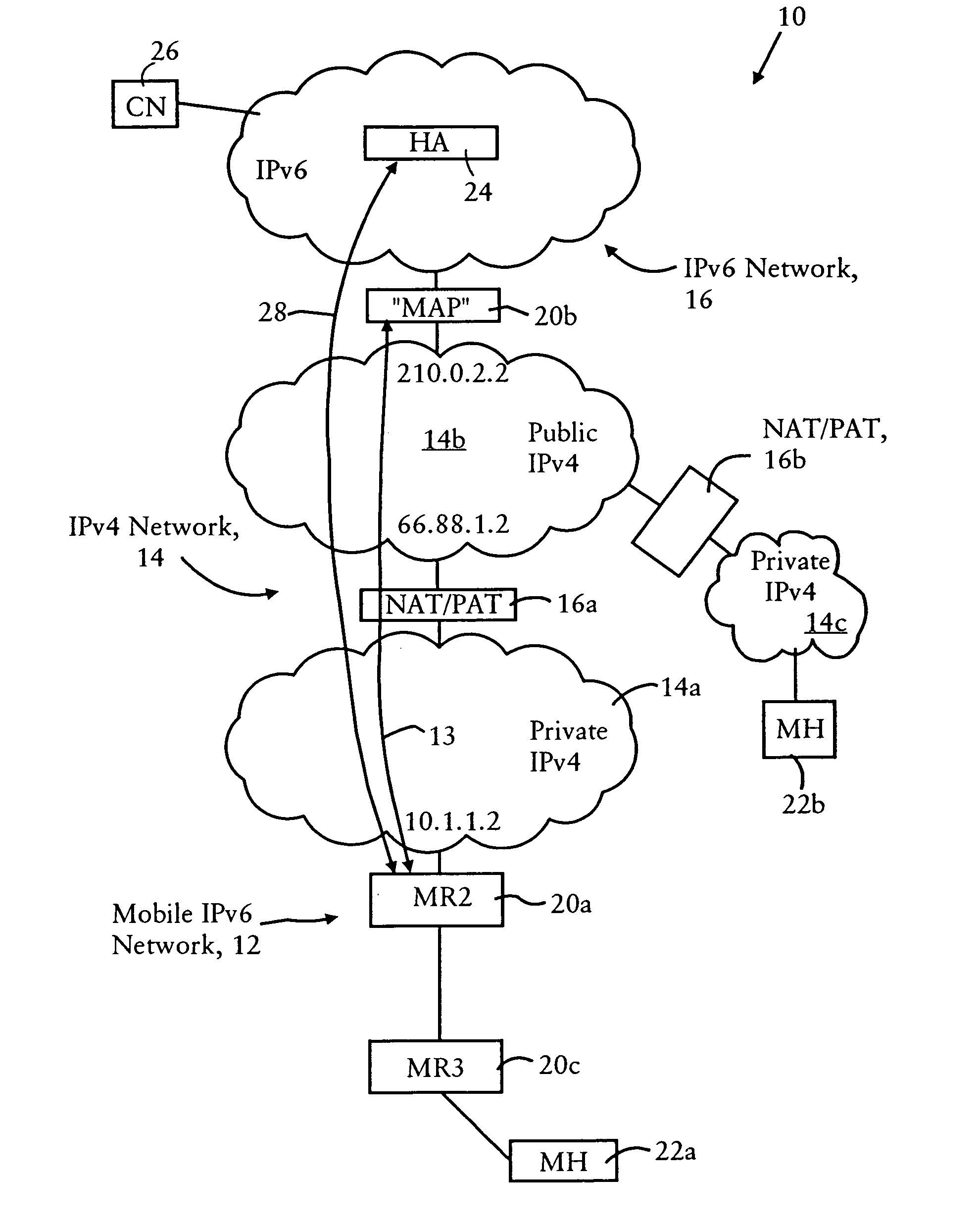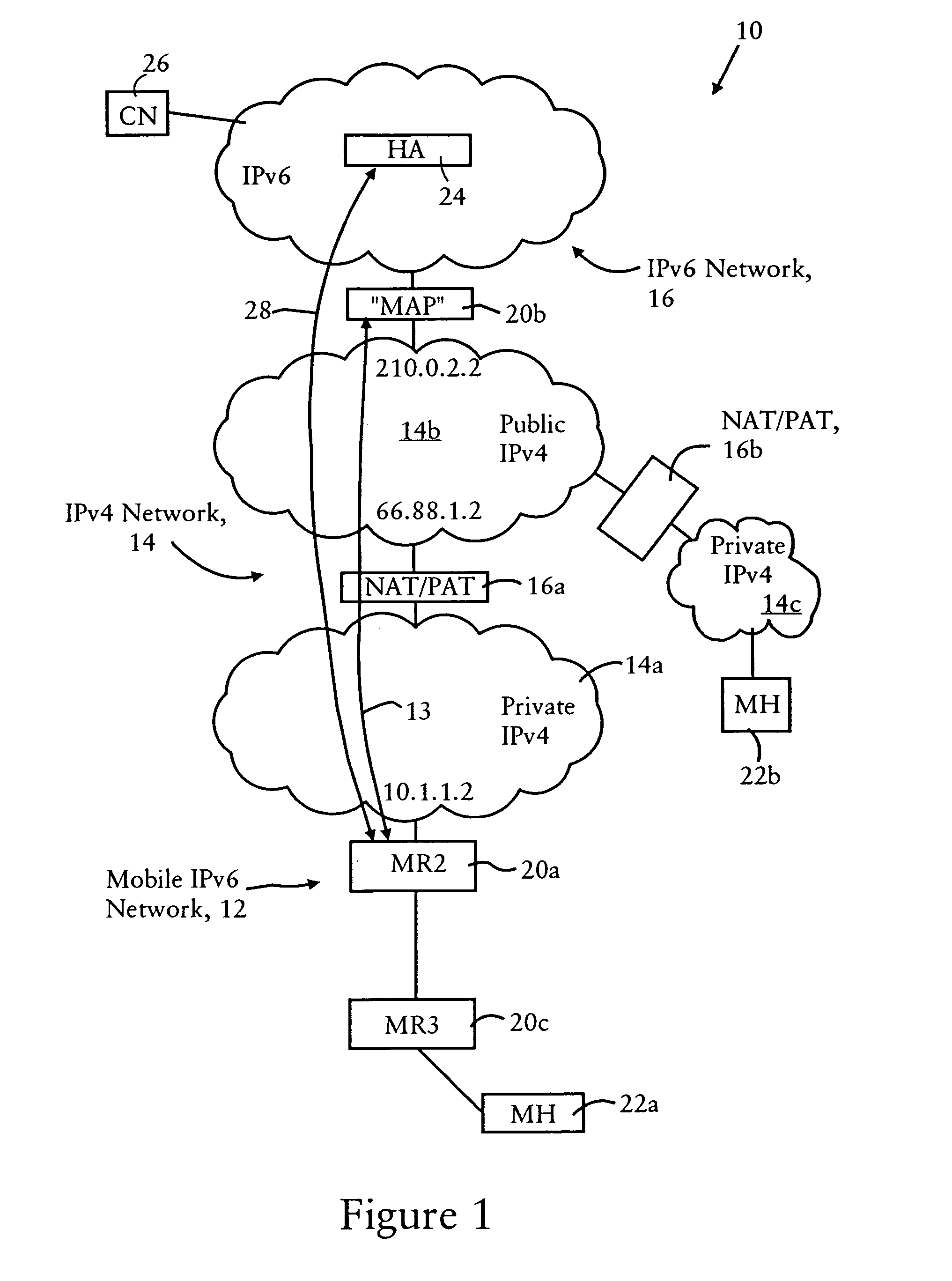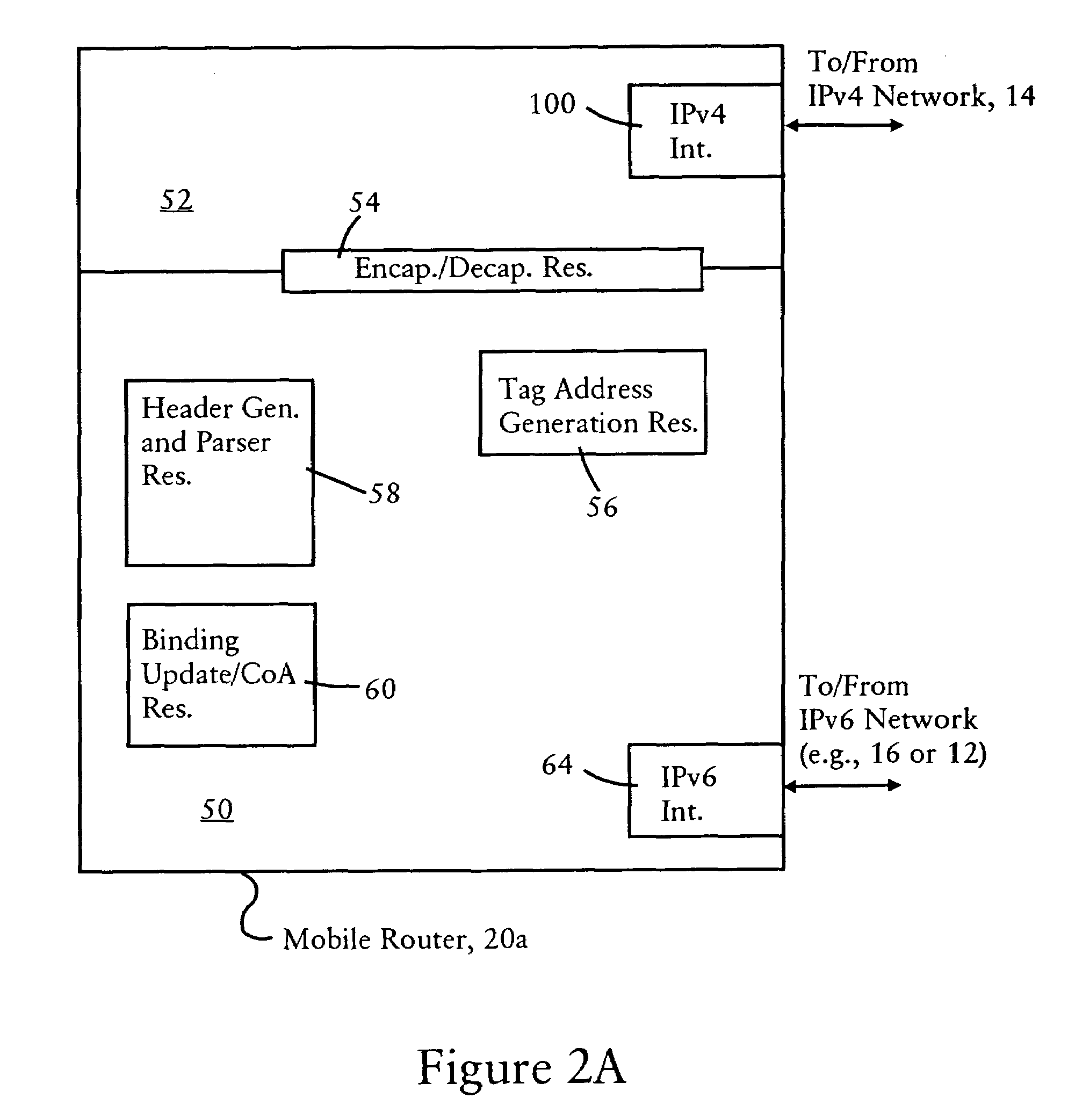Arrangement for traversing an IPv4 network by IPv6 mobile nodes via a mobility anchor point
a technology of mobility anchor point and ipv4 network, which is applied in the field of arrangement for traversing an ipv4 network by ipv6 mobile nodes via a mobility anchor point, can solve the problems of symmetric nats, the inability of symmetric nats to include the same ipv4 identifier for communications with the teredo server and the teredo relay, and the inability to include the 6to4 mechanism
- Summary
- Abstract
- Description
- Claims
- Application Information
AI Technical Summary
Benefits of technology
Problems solved by technology
Method used
Image
Examples
Embodiment Construction
[0033]The disclosed embodiment is an improvement of the arrangement disclosed in the above-incorporated parent application No. 10 / 383,567, filed Mar. 10, 2003 (hereinafter “parent application”) directed to tunneling IPv6 packets across an IPv4 network based on use of IPv6 based reverse routing headers. The generation and use of reverse routing headers was published on Jun. 19, 2002 by the inventors as an Internet Draft, “IPv6 Reverse Routing Header and its application to Mobile Networks” available on the World Wide Web at the IETF website address “ietf.org / internet-drafts / draft-thubert-nemo-reverse-routing-header-00.txt” and is incorporated in its entirety herein by reference. A more recent version was published Oct. 11, 2002, available on the World Wide Web at the IETF website address “ietf.org / internet-drafts / draft-thubert-nemo-reverse-routing-header-01.txt” and incorporated in its entirety herein by reference.
[0034]The disclosed improvement eliminates the necessity of reverse rou...
PUM
 Login to View More
Login to View More Abstract
Description
Claims
Application Information
 Login to View More
Login to View More - R&D
- Intellectual Property
- Life Sciences
- Materials
- Tech Scout
- Unparalleled Data Quality
- Higher Quality Content
- 60% Fewer Hallucinations
Browse by: Latest US Patents, China's latest patents, Technical Efficacy Thesaurus, Application Domain, Technology Topic, Popular Technical Reports.
© 2025 PatSnap. All rights reserved.Legal|Privacy policy|Modern Slavery Act Transparency Statement|Sitemap|About US| Contact US: help@patsnap.com



